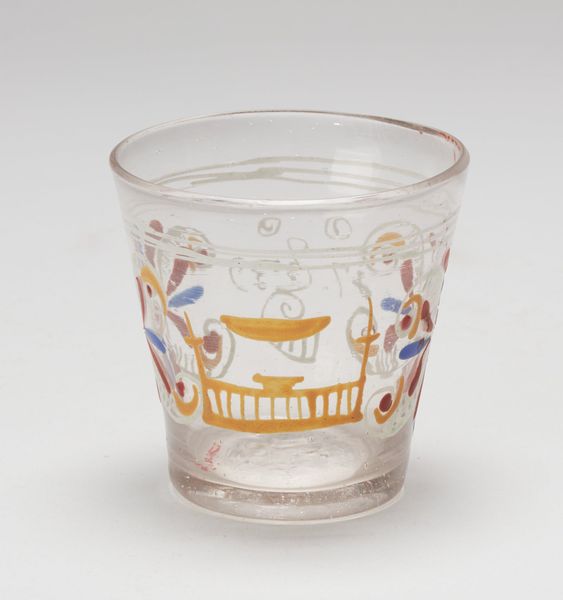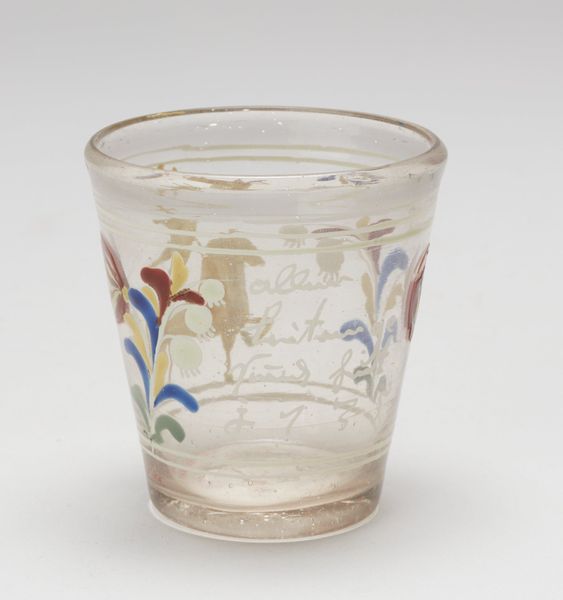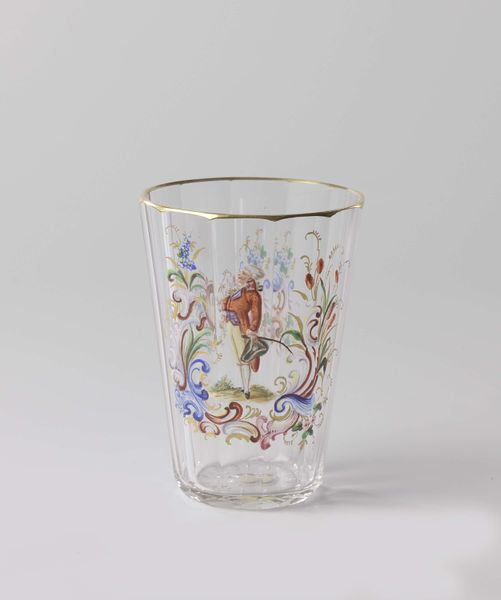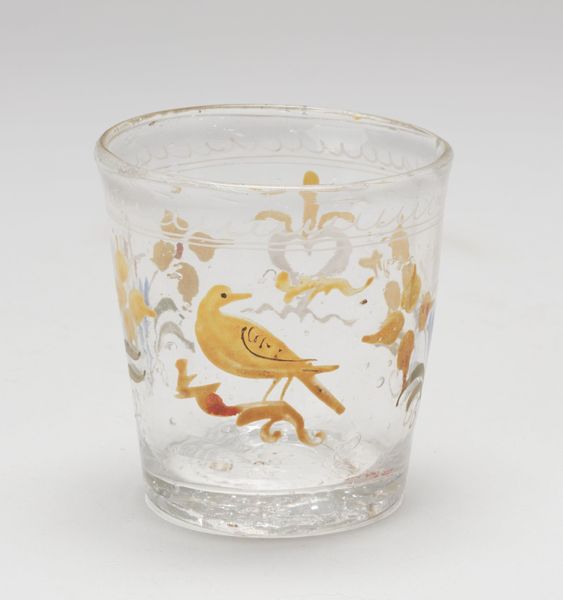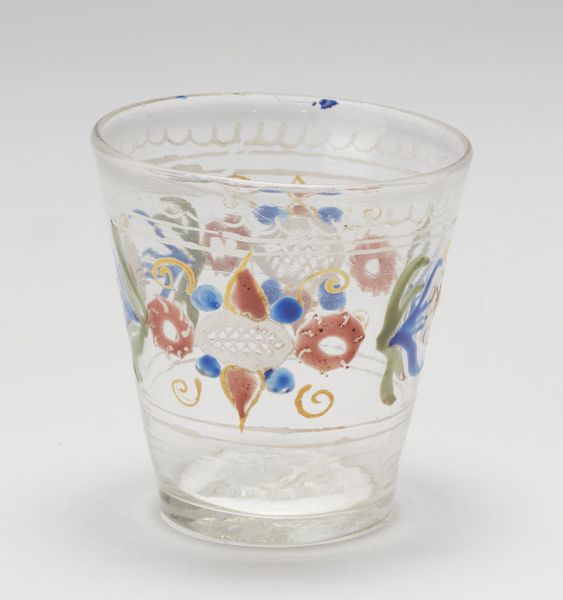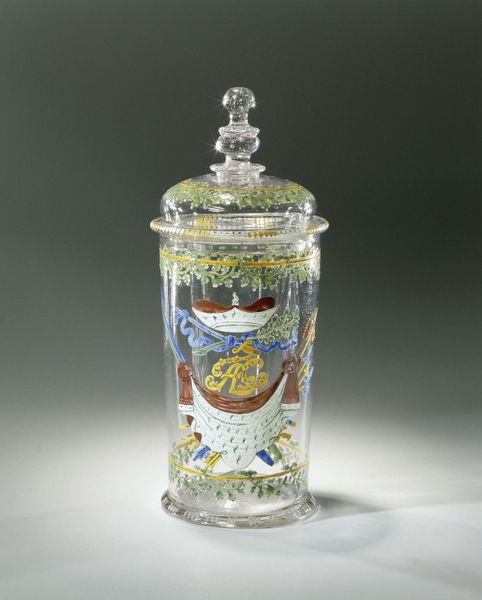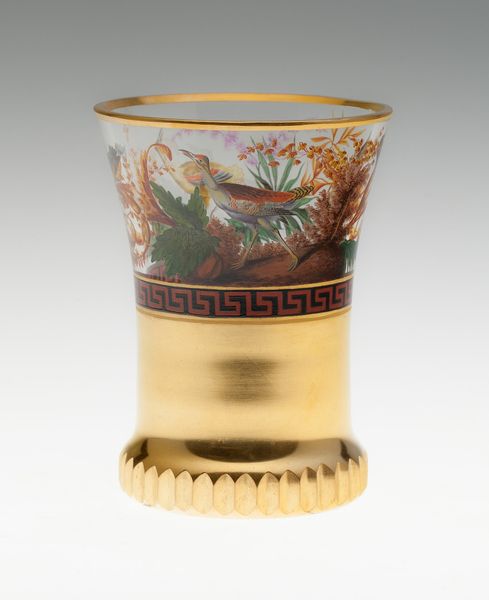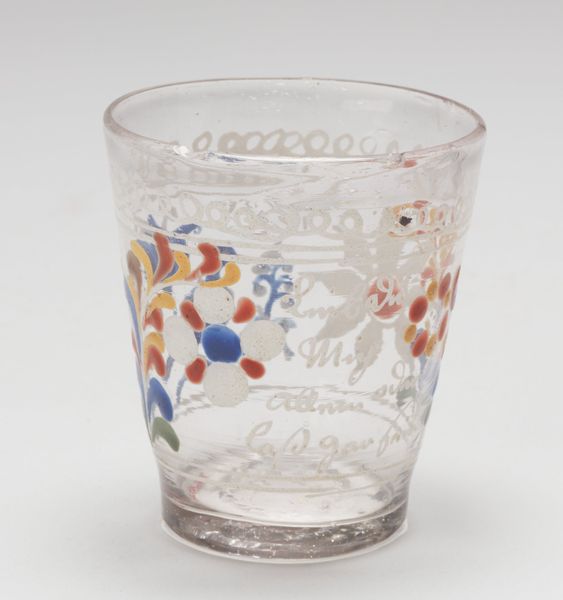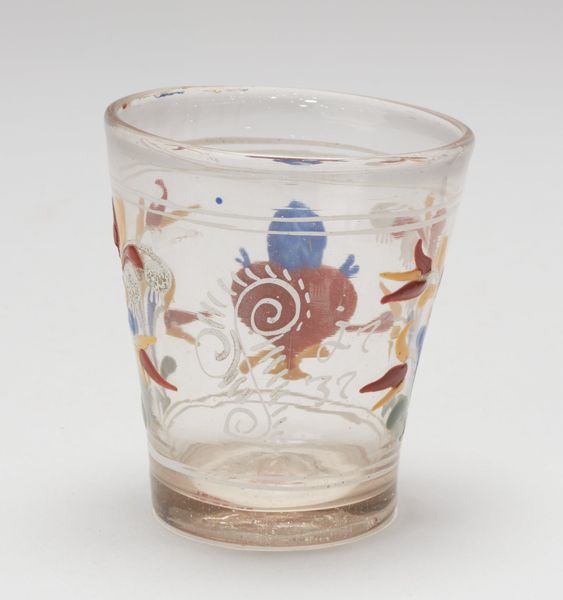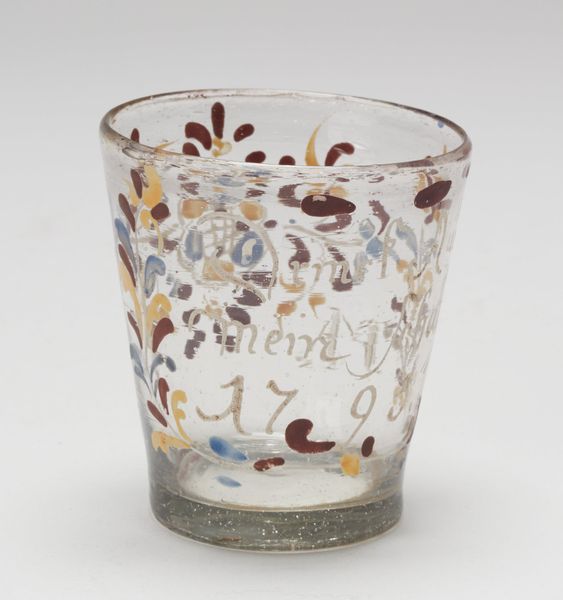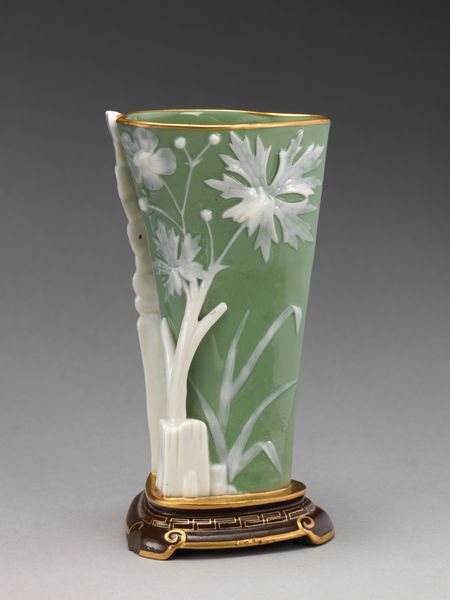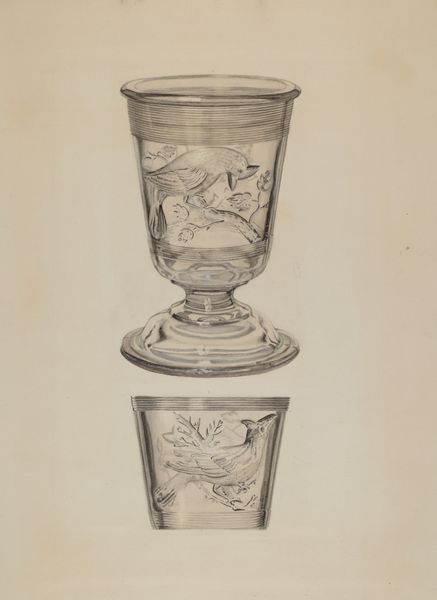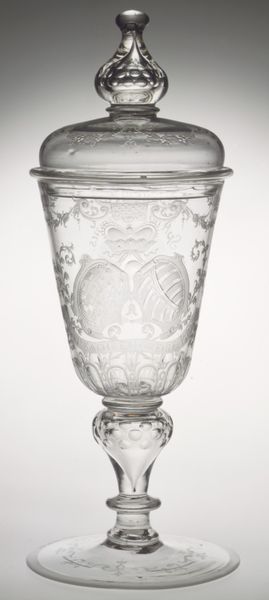
drawing, glass
#
drawing
#
glass
#
romanticism
#
ceramic
#
decorative-art
#
miniature
Dimensions: 10.5 × 7.1 cm (4 1/8 × 2 13/16 in.)
Copyright: Public Domain
Curator: The 'Beaker with Tarot Cards' by Anton Kothgasser, around 1820, stands before us, a delicate glass object adorned with finely drawn tarot figures. It's currently part of the Art Institute of Chicago's collection. Editor: My first thought is: exquisite craft! The delicate etching on glass gives it a fragile beauty that belies the potential for everyday use. It almost elevates a mundane object into the realm of precious, miniature art. Curator: Exactly. Looking at this from a historical angle, the production of these painted glass beakers flourished in Austria, specifically Vienna, at the time. They were luxury goods, catering to a rising bourgeois class with an appetite for fine, decorative arts. Editor: Yes, and it's the craftsmanship I'm drawn to. Someone painstakingly painted these minute tarot scenes. What was the working process? Did Kothgasser have assistants? Did this craft feed the burgeoning Romantic interests of the time with esotericism and the allure of the unknown? The use of glass also, a material simultaneously functional and fragile is such an important choice! Curator: The images are clearly aligned with the growing public fascination for occult practices and the vogue of fortune telling. Tarot imagery became fashionable across various media—books, prints, and now, adorning functional objects. They catered to people from various social classes, interested in social mobility and access to fine goods. Editor: Did the consumers of these objects find the material's fragility particularly poetic or meaningful considering their readings and their lives, knowing all might vanish in an instant? Curator: Possibly! Its preciousness could have been appealing precisely due to that association with luck, fragility, and ephemeral fortunes. It speaks of a culture where status and artistry converged to fulfill desires for symbolic and functional artifacts. Editor: Reflecting upon Kothgasser’s Beaker makes one consider labor and material combined—it highlights both the physical processes involved and evokes broader cultural forces related to Romanticism. Curator: Precisely, and understanding those historical influences can transform how we see these intriguing items and their role in defining that particular historical moment.
Comments
No comments
Be the first to comment and join the conversation on the ultimate creative platform.
